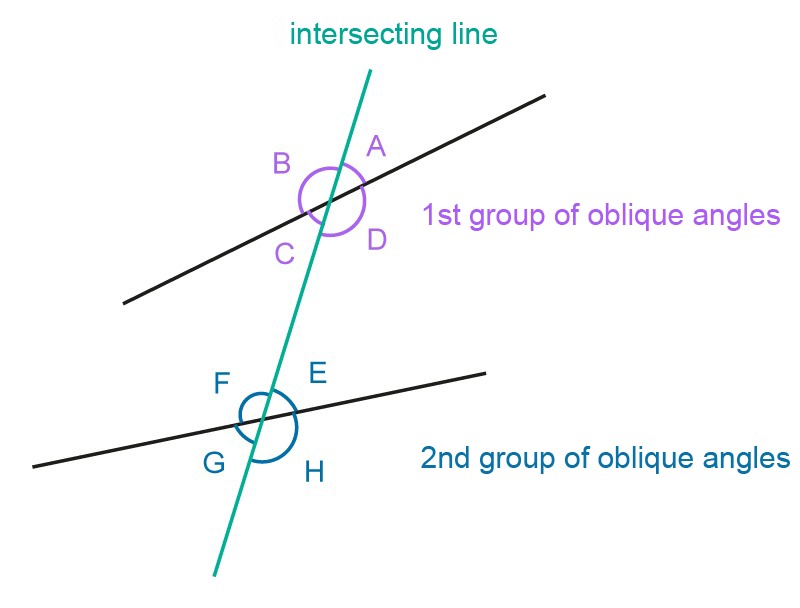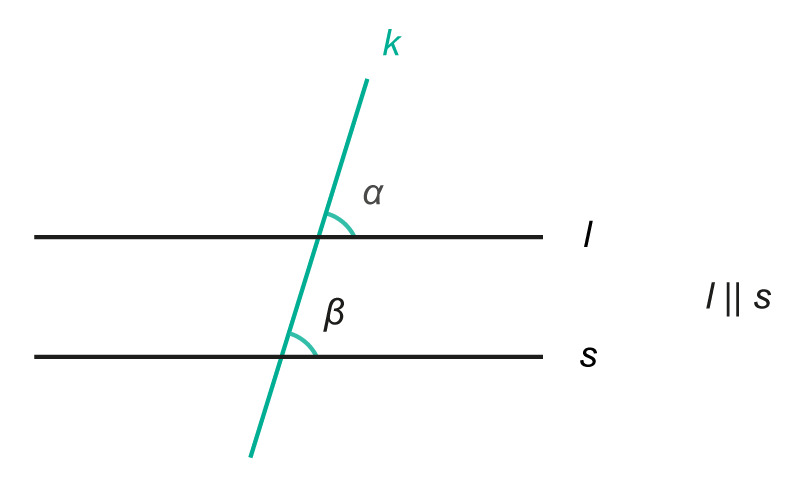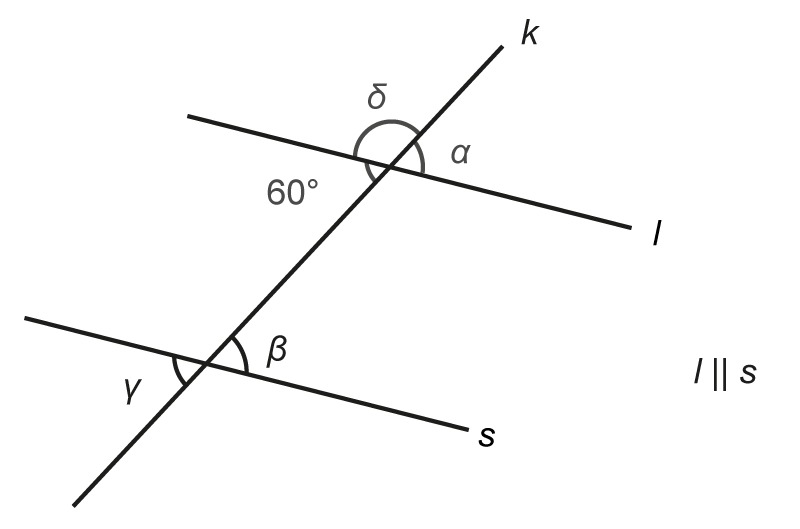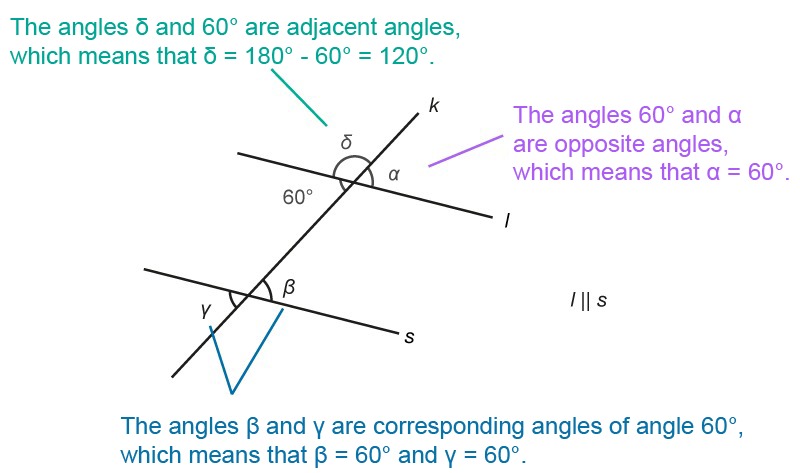5. Corresponding angles
Exercises
Corresponding angles
When a line intersects two other lines, two groups of concave angles are formed. Two angles belonging to different groups are said to be corresponding angles if the intersecting line is on the same side of both angles.
Example 1
Which of the angles in the image are one another's corresponding angles?

The corresponding angles of [[$ \angle $]]A are [[$ \angle $]]E and [[$ \angle $]]G. The intersecting line is on the left side of the angles. Why isn't [[$ \angle $]]C a corresponding angle?
The corresponding angles of [[$ \angle $]]B are [[$ \angle $]]F and [[$ \angle $]]H. The intersecting line is on the right side of the angles.
The corresponding angles of [[$ \angle $]]C are [[$ \angle $]]E and [[$ \angle $]]G. The corresponding angles of [[$ \angle $]]D are [[$ \angle $]]F and [[$ \angle $]]H.
The equivalence of corresponding angles
Corresponding angles are exactly equal when the two intersected lines are parallel.
Example 2
Let's look at the case where the intersected lines are parallel.

The angles [[$\alpha $]] and [[$\beta $]] are corresponding angles, since they have the intersecting line [[$ <em><b>k</b> $]] as their left side. In this case, the corresponding angles are equal to one another because the intersected lines l and s are parallel.
Example 3
Determine the magnitudes of angles [[$ \alpha, \beta, \gamma \text{ and } \delta $]] when the lines l and s are parallel.

Since the lines l and s are parallel, the corresponding angles are equal.

Answer: [[$ \alpha=60°, \beta= 60°, \gamma = 60° \text{ ja }\delta = 120° $]].